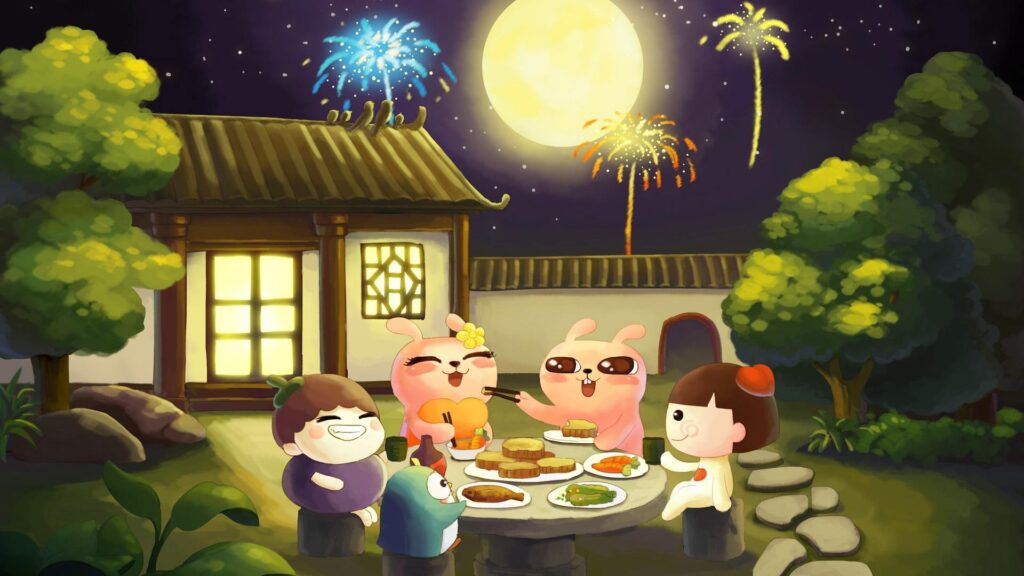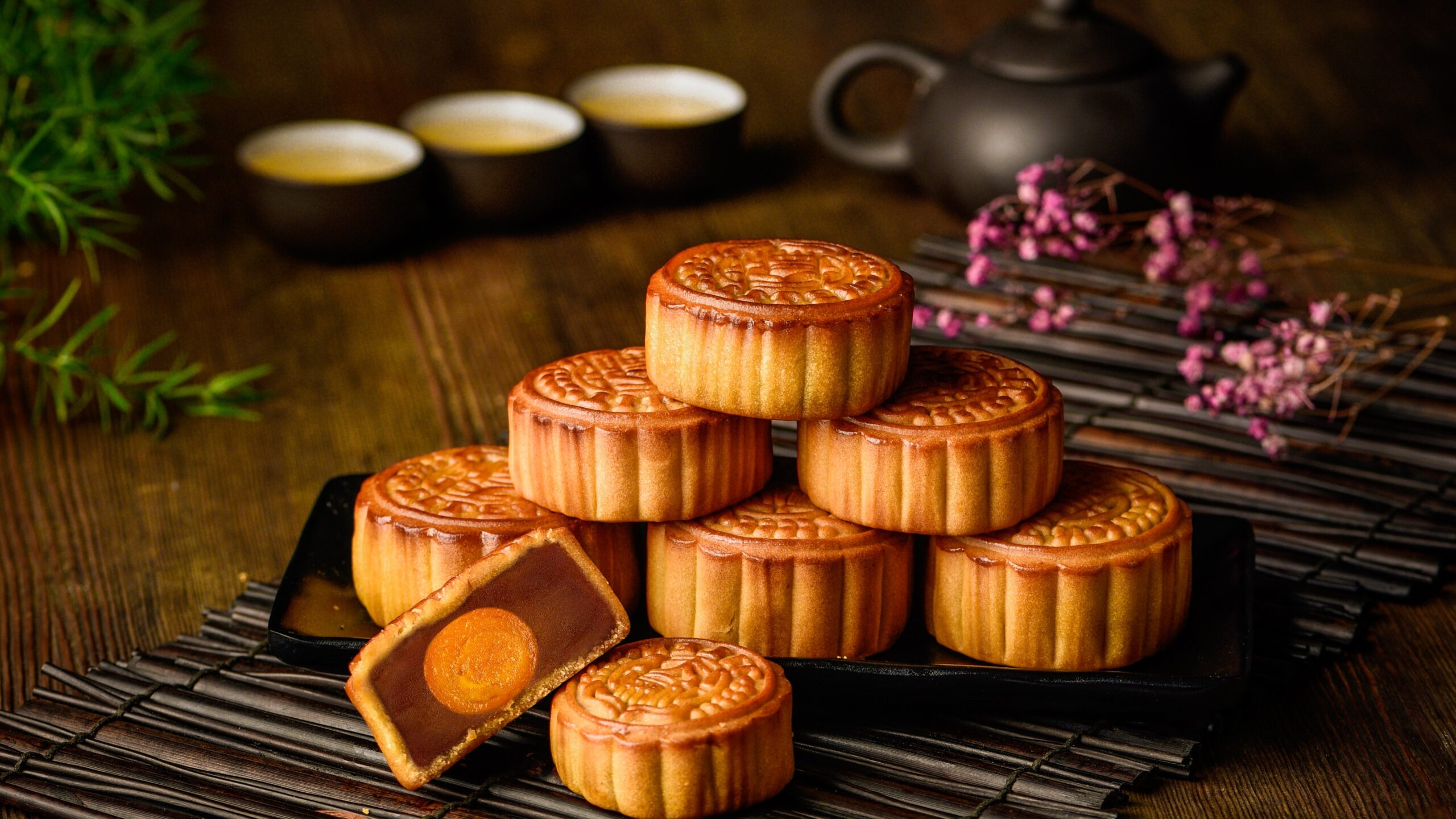Discover the Magic of Full Moon Festival in China.
Mid-Autumn Day: The Heart of the Chinese Full Moon Festival
The Full Moon Festival, known by its alternative name, the Mid-Autumn Festival, stands as one of the most cherished and culturally significant celebrations in Chinese tradition. This festival, which falls on the 15th day of the 8th lunar month, is a time for family gatherings, heartfelt reunions, and the appreciation of the full moon’s radiant glow. As we delve into the heart of this festival, we’ll uncover the enchanting stories that have woven their way into its history, explore the customs that have endured through the centuries, and savor the sumptuous culinary treasures, most notably, mooncakes.
This blog post is your gateway to understanding the essence of this enigmatic festival, allowing you to appreciate the unique blend of history, traditions, and food that make it a truly magical experience in Chinese culture. So, let’s embark on a captivating journey into the heart of the Full Moon Festival in China and uncover the stories, customs, and flavors that have shaped this beloved celebration.

History of The Full Moon Festival
The Full Moon Festival, also known as the Mid-Autumn Festival, boasts a rich historical tapestry that has been woven over thousands of years. This cultural celebration’s origins can be traced back to ancient China, and its history is steeped in both folklore and historical events.
1. Ancient Roots:
The festival’s beginnings are intertwined with agrarian traditions, as it marked the end of the autumn harvest. The practice of offering sacrifices to deities and ancestors during this time was common in ancient China to express gratitude for a bountiful harvest.
2. Emperor Wu and Moon Worship:
During the Tang Dynasty (618-907 AD), the Mid-Autumn Festival took on a more formal aspect when Emperor Xuanzong decreed the celebration of the event with grand ceremonies, including moon worship. This formalization elevated the festival’s significance in Chinese culture.
3. Folklore and Legends:
The festival is not complete without its legendary tales. One of the most famous legends involves the archer Hou Yi and the ten suns. Another popular legend tells the story of Chang’e, the Moon Goddess, and her connection to the moon. These stories have become integral to the festival’s cultural significance and are often retold and celebrated.
4. Evolution Over the Centuries:
Over the centuries, the Mid-Autumn Festival underwent numerous transformations. It was celebrated by different dynasties and ethnic groups, each leaving their own unique mark on the traditions and customs associated with the festival. The festival evolved as it absorbed elements from various cultures, making it a vibrant and ever-changing celebration.

Representation of The Legend of the Moon Goddess
Traditions and Customs of the Full Moon Festival:
The traditions add depth and meaning to the celebration, fostering a sense of unity and cultural continuity. Let’s explore some of the most cherished customs associated with this festival:
1. Lanterns and Mooncakes:
– Lanterns and mooncakes are iconic symbols of the Mid-Autumn Festival. Lanterns come in various shapes and sizes, with children often parading with colorful lanterns in parks and gardens. They symbolize brightness and hope. Mooncakes, on the other hand, are a delectable treat, and it’s customary to exchange and enjoy them with family and friends. They represent unity and completeness, as the full moon does.
2. Family Reunions:
– The Full Moon Festival is a time for family gatherings. Families come together to celebrate, share a meal, and enjoy each other’s company. The reunion dinner is an essential part of the celebration, where generations gather to appreciate the full moon, express love and gratitude, and strengthen family bonds.
3. Moon Gazing:
– Moon gazing is a cherished tradition during the festival. Families and friends gather outdoors to admire the full moon, believed to be at its brightest and roundest on this night. This activity fosters a sense of connection with loved ones, even if they are separated by great distances.
4. Dragon and Lion Dances:
– In some regions of China and in Chinese communities worldwide, dragon and lion dances are performed during the Full Moon Festival. These colorful and lively dances are believed to bring good luck and ward off evil spirits. They add a festive atmosphere to the celebrations.
These customs and traditions make the Full Moon Festival a deeply meaningful and joyful occasion. They provide an opportunity for people to express love, gratitude, and goodwill, and they reinforce the sense of togetherness and cultural identity. Whether through lanterns, mooncakes, or moon gazing, these customs create a sense of unity and nostalgia, making the Full Moon Festival a time of shared joy and cherished memories.

Family throwing a lantern represents unity.
Mooncakes at The Full Moon Festival
Food plays a central role in the Full Moon Festival, and mooncakes are the undisputed stars of the culinary scene during this celebration. Let’s delve into the importance of food, with a special focus on mooncakes, exploring their different types, significance, and regional variations.
Mooncakes and Their Significance:
1. Shape and Symbolism: Mooncakes are typically round, symbolizing completeness and unity, just like the full moon. The round shape also represents family reunion and harmony, which are at the heart of the festival.
2. Traditional Fillings: The most common include lotus seed paste, red bean paste, and salted egg yolks. Each filling has its own flavor and texture, offering a delightful contrast.
3. Modern Variations: In addition to the traditional fillings, mooncakes have evolved to include a wide range of flavors and fillings. These may include custard, pineapple, chocolate, ice cream, and even savory options like pork floss or green tea. Modern mooncakes cater to a broader range of tastes, appealing to a diverse audience.

Traditional mooncakes with red bean paste and salted egg yolks!
Significance in Chinese Culture
The Mid-Autumn Festival, holds deep cultural significance in Chinese society. It plays a pivotal role in shaping Chinese culture, emphasizing core values, and reinforcing the importance of family unity. Let’s explore the festival’s cultural significance and its role in Chinese culture:
1. Celebration of Unity:
The Full Moon Festival is all about unity. Just as the full moon represents completeness and togetherness, the festival serves as a symbol of unity within families and communities. It’s a time for people to come together, regardless of where they may be, to celebrate and enjoy each other’s company. The act of moon gazing, often done collectively, reinforces the sense of shared experience.
2. Family Values:
Family is the cornerstone of Chinese society, and the Full Moon Festival places a spotlight on the importance of family values. It’s a time for family members to gather, whether they are living in the same household or coming together from different parts of the country or world. The festival highlights the significance of filial piety, respect for elders, and the strong bonds that connect family members.
3. Appreciation of Nature:
The festival occurs during the autumn season when the weather is pleasant, and the harvest is complete. This timing allows people to appreciate the beauty of nature and the changing seasons. The act of moon gazing and spending time outdoors during the festival fosters a sense of harmony with the natural world.
4. Cultural Heritage:
The Full Moon Festival is deeply rooted in Chinese history and tradition. It’s a way for Chinese people to connect with their cultural heritage, pass down age-old customs, and introduce younger generations to their roots. The festival promotes the continuity of Chinese culture, ensuring that cherished traditions are preserved and celebrated.
5. Symbol of Reunion:
The full moon is often associated with reunion and completeness. The festival serves as an annual opportunity for people to reunite with loved ones and strengthen family ties. The moon symbolizes the family’s reunion, even when they are separated by distance, which resonates deeply with the Chinese people, especially those who live apart from their families.
6. Expression of Love and Well-Wishes:
The act of sharing mooncakes and gifts during the Full Moon Festival is an expression of love, respect, and well-wishes. People exchange tokens of appreciation, reinforcing the sense of goodwill and harmony within their relationships.
7. Cultural Exchange:
The Full Moon Festival is not only celebrated in China but also by Chinese communities around the world. It provides an opportunity to share Chinese culture and traditions with people from different backgrounds, promoting cultural exchange and understanding.

Representation of a Family Reunion during The Moon Festival.
Conclusion
The Full Moon Festival, known as the Mid-Autumn Festival in China, is an enchanting and culturally significant celebration that has endured for centuries. In this blog post, we’ve embarked on a journey to uncover the heart of this beloved festival, exploring its history, traditions, and the mouthwatering delights of mooncakes.
Key takeaways from our exploration of the Full Moon Festival include:
1. The festival’s rich history, steeped in legends and ancient customs, reflects the deep roots of Chinese culture.
2. The legend of Hou Yi and the ten suns, as well as the tale of Chang’e, the Moon Goddess, adds layers of meaning to the celebration, emphasizing themes of sacrifice, love, and longing.
3. Traditions and customs such as lanterns, moon gazing, dragon dances, and riddles enhance the festival’s cultural significance and bring communities together.
4. Mooncakes, with their diverse flavors and regional variations, symbolize unity, completeness, and the delightful fusion of tradition and innovation.
5. In the modern era, the Full Moon Festival remains a time for family reunions, unity, and the continuation of cherished customs.
6. The festival plays a pivotal role in promoting family values, fostering an appreciation of nature, and preserving cultural heritage.
7. The act of sharing mooncakes and celebrating under the full moon reinforces goodwill, love, and respect among family and friends.
As we conclude our exploration of the Full Moon Festival, we invite you to experience this cultural celebration firsthand. Join Yu Kung Fu in China and celebrate a time for unity, reflection, and the creation of enduring memories with worldwide friends. So, mark your calendars and join in the festivities to immerse yourself in the magic of the Full Moon Festival, where history, traditions, and the taste of mooncakes blend to create a truly enchanting experience.

For More Information contact info@yukungfu.com
